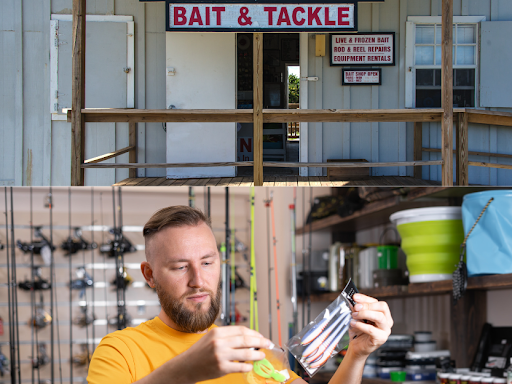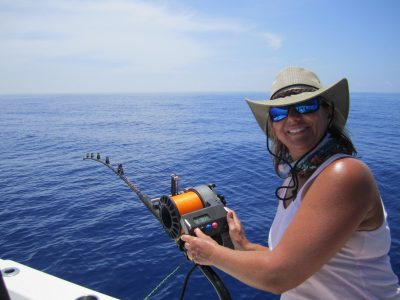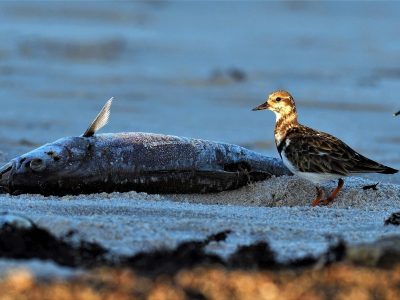Fall in Florida brings a change in the weather, and with it, a shift in fish behavior. To maximize your catch during this beautiful season, it’s essential to adjust your angling strategy accordingly.
Understanding the Fall Transition
Fall in Florida marks a transition from the hot, humid summer months to the cooler, drier winter. This change in temperature can significantly impact fish activity and behavior. As water temperatures drop, fish often become more active and aggressive feeders.
Key Adjustments for Fall Angling
- Target Different Species: While some species, like redfish and snook, remain active throughout the year, others may become more abundant in the fall. Consider targeting species like spotted sea trout, grouper, and kingfish as well as migratory fish like sailfish and marlin
- Adjust Your Gear: As water temperatures cool, fish often move to deeper waters. You may need to use heavier line and larger lures to reach them. Additionally, consider using slower retrieves and more subtle presentations. Deeper waters generally offer more stable temperatures compared to the rapidly cooling shallows. As surface temperatures drop, many fish seek out these deeper, more thermally stable environments.
- Species Example: Species like grouper, snapper, and certain types of bass are known to move deeper as shallow waters cool.
- Focus on Structure: Fish often seek out structure, such as reefs, wrecks, and mangrove shorelines, for protection and food. Spend more time exploring these areas during the fall.
- Pay Attention to Tides: Tides can play a significant role in fish activity, especially in shallow areas. Plan your fishing trips around favorable tide conditions.
- Consider Weather Patterns: Fall can bring unpredictable weather, so be prepared to adjust your plans accordingly. Avoid fishing during severe storms or high winds.
Insider Tips for Fall Angling in Florida

-
Embrace the Early Morning and Late Afternoon:
Golden Hour: The hours around sunrise and sunset, often referred to as the “golden hour,” are prime times for fishing. The cooler temperatures and changing light conditions can trigger increased fish activity.
Avoid the Midday Slump: During the hottest parts of the day, fish may become less active. Consider taking a break and returning to the water in the late afternoon or early evening.
-
Leverage Local Knowledge:
Talk to the Locals: Engage with local anglers, tackle shops, and fishing guides. They can provide invaluable insights into current conditions, hot spots, and effective techniques.
Join Fishing Forums: Online forums and social media groups can be a great way to connect with other anglers and share information.
-
Master the Art of Bait Selection:
Match the Hatch: Choose bait that mimics the natural food sources of the fish you’re targeting. This can make a huge difference in your success rate.
Fall Fishing Favorites: Natural Food Sources
- Spotted Sea Trout: These fish are primarily carnivorous, feeding on a variety of small invertebrates and fish. In shallow flats and mangrove-lined creeks, they often target shrimp, crabs, mullet, and small baitfish.
- Redfish: Redfish are opportunistic feeders and will consume a wide range of prey. Common food sources include shrimp, crabs, mullet, pinfish, and small game fish.
- Snook: Snook are also opportunistic feeders and prey on a variety of fish, shrimp, and crabs. They are known for their aggressive feeding habits and will often strike at larger prey items.
- Grouper: Grouper are primarily carnivorous and feed on a variety of fish, including smaller grouper species, snapper, and jacks. They are often found around reefs and wrecks, where they can ambush prey.
- Kingfish: Kingfish are migratory predators that feed on a variety of fish, including mullet, sardines, and anchovies. They are often found near schools of baitfish and can be aggressive feeders.
-
Pay Attention to Water Conditions:
Clarity: Clear water can be more challenging for fish to spot your bait. Opt for more subtle presentations and consider using fluorocarbon line.
Current: Strong currents can make it difficult to maintain control of your line. Adjust your techniques and gear accordingly.
-
Embrace the Unexpected:
Explore New Waters: Don’t be afraid to venture outside of your comfort zone and explore new fishing spots. You might discover hidden gems that other anglers may have overlooked.
Try Different Techniques: Experiment with various fishing techniques, such as live baiting, trolling, and jigging. You may be surprised at what works best in different conditions.
Fall Angling Favorites
- Spotted Sea Trout: These popular game fish are often more active in the fall, especially in shallow flats and mangrove-lined creeks.
- Redfish: Redfish are known for their aggressive strikes and can be found in a variety of habitats, from shallow flats to deeper channels.
- Snook: Snook are a prized catch in Florida and can be found in both inshore and offshore waters.
- Grouper: Grouper fishing can be excellent in the fall, especially in deeper waters and around reefs and wrecks.
- Kingfish: These migratory fish often move closer to shore in the fall, providing exciting fishing opportunities.
- Sailfish: Fall and Winter are prime times for sailfish activities. Look for color change near shore and just off the reef lines.
Remember to always follow local fishing regulations and practice responsible angling.
Download FishVerify today and become a more responsible angler. Get access to real-time fishing regulations, catch limits, and local fishing tips, all in one convenient app.


